Technogym, the Italian exercise equipment company, recently announced its appointment as the official equipment supplier at the 2016 Summer Olympics in Rio de Janeiro. The upcoming games will mark Technogym’s sixth time as official supplier.
The company reportedly will provide equipment for the main Olympic Village in Barra da Tijuca and will equip 15 centers and warm-up areas at competition venues. About 1,000 pieces of Technogym equipment and Technogym’s mywellness cloud digital platform will be installed. Technogym also will provide 50 athletic trainers as well as gym layout, installation, and technical service.
“We are very proud to have been chosen for the sixth time as the official supplier of the Olympic Games,” Nerio Alessandri, president and founder of Technogym, said in a statement. “This important achievement represents a victory for the whole Technogym team and a strong reference on our products innovation and quality standards.”
Eric Willin, COO, of EZFacility, a fitness facility management software developer in Woodbury, New York, noted the prevalence of Technogym equipment at gyms, health clubs, and fitness centers throughout the world. “Fitness facilities constantly seek out equipment that can be efficiently managed and that showcases both innovation and a commitment to traditional quality,” he said. “As official equipment supplier for the Olympics six times in a row, Technogym has established itself as a trusted brand.”
Author: ezfacility

Bringing the Taste of a Retreat into the Everyday Life
Luxury health-fitness retreats have become something of a trend. Perhaps some of your members have tried them, or maybe you’ve given one a go yourself. If not, you can imagine the drill: At a beautiful resort somewhere exotic or simply far away from it all, you and your fellow companions spend a week or so hiking twelve miles a day, taking yoga and weight-training classes, and working out for as many hours as possible, and you do it all on about 1,200 calories a day (luckily, many such retreats also feature massages and facials, so be grateful).
Don’t get me wrong—I think this trend offers wonderful opportunities to people who want to kickstart a fitness regimen or who love a good workout and want to combine one with a vacation. There are many reasons why I’d jump at the chance to go on a fitness retreat myself. However, there are also many factors holding me back, several of which have to do simply with practical limitations: time, money, child care.
That got me thinking. What I really need is a luxury health-fitness retreat here at home. I need a week-long or ten-day crash course in intense exercise and healthy eating right here where I live and work. Boot camps, of course, abound in New York City and throughout the country, but what I want is something even more focused and intensive—something that gives me a sense of total immersion while also offering me a chance to get things done. I wonder if there’s an opportunity here for the gyms and health clubs, a hole to fill. It might be worth considering whether there’s a flexible form of health retreat that you could offer members (and nonmembers too, as a way to invite them to join your facility).
I imagine something that begins early in the morning, soon after I drop my son off at the bus stop. A two-hour class could ensue, followed by a healthy breakfast. Afterwards, there could be a three- or four-hour break for participants to get work done or run errands (and possibly wi-fi and lounge/workspace made available to those who want it). Another two-hour exercise period could follow the break, with a light lunch afterward—maybe offered while nutrition or fitness experts offer talks on the best ways to carry the effects of the retreat over into the everyday life. For the afternoon, childcare could be on offer while another class takes place, and after, everyone could be sent home with instructions for dinner. Facials and massages could also be offered on select days. Follow-up sessions in subsequent months might be something participants could elect to take part in for an extra fee.
Many variations of that scenario are possible, and it’s especially worth dreaming up options that might better suit office workers. No matter what form a hometown fitness retreat takes, the benefits could be immense, and not just for participants: Your club could find itself with a new revenue stream. Plus, as alluded to earlier, it can be an effective way to draw in new members (prospectives who take part in the program could be offered a discount on first month’s membership, or the like).

Keeping Up Appearances
Recently, here in New York City, I was helping a friend research options for a swimming facility. We visited Yelp.com, which, as everybody knows, is the place to go for the inside scoop on any and every business imaginable. A search on Yelp for “gym swimming pools” pulled up a long list of gyms, health clubs, and fitness centers that have pools. At first we were overwhelmed. Then we realized how easy Yelp makes it to weed choices out. Does it have less than four stars? Forget it.
That’s for starters. Once you begin reading the reviews, it becomes crystal clear which places are worth trying and which ones are better off ignored. For one club that received two stars, for example, we found the following reviews: “Limited availability for lap swimming and the club does not adhere to its weekly pool schedule,” “There have been lots of problems ranging from overcrowded, stinky locker rooms with broken lockers to lack of morning classes for people who work,” and, simply, “Horrible!”
The same gym had one highly positive review—but the negative voices drowned it out. This is all well and good for consumers. But what if you’re a gym owner, where your facility has a low rating, and comments are negative, even though you know you deserve better? The fact is, online customer reviews can make or break you. In order to ensure a healthy digital profile, one that won’t damage your chances of drawing in prospective clients and winning new members, you’ve got to take action.
The first step is to know what’s out there about you. Take a look at Yelp and other similar customer review sites (such as Angie’s List, the Better Business Bureau, Epinions, and Google+ Local). Are there reviews for your business? Keep in mind that having reviews is a good thing—just as negative reviews can have a negative impact, positive reviews can have a positive one. You want people to be able to find you on Yelp (if they can’t, they’ll wonder why you’re not there); you just want to control the impressions they form when they do. So take a look, hope you’re there, and read carefully through the reviews you find.
Now, here’s the thing: On Yelp and many other sites, you can respond publicly to comments that are posted. That’s right—you have a chance to set the record straight, and if you handle things graciously enough, you might be able to turn a negative review into an opportunity, a chance for the marketplace to see how reasonable, generous, and responsive your facility is. When my friend an I found a response to a negative review of a local gym, we were impressed: The response included an apology, an explanation, an assertion that the customer was right, and an offer to make up for the bad experience. We kept that one on the list of places to check out.
If a mere response feels inadequate to you, or if you’re overwhelmed by the number of customer review sites out there or the daunting task of keeping track of everything said about your facility online, keep in mind that there are companies that help you clean up your online presence. Reputation.com, Reputation Changer, Big Blue Robot, Metal Rabbit Media—these are just a few outfits that find ways to push potentially damaging online content further down in search result lists and pull positive materials to the top. Some of them are pricey, but when it comes to presenting your best face to potential customers, the cost may be worth it.
XSport Fitness to Expand in Chicago, New York, and Washington, D.C.
XSport Fitness, a chain of 24-hour fitness facilities based in Big Rock, Illinois, recently announced plans to expand in its three primary markets: Chicago, New York, and Washington, D.C.
By the end of 2016, XSport will have opened new clubs in Melrose Park, Illinois; the Bronx, New York; and Fort Totten, a neighborhood in Washington, D.C. With a reported $176 million in 2013 revenue, XSport is well poised for expansion. In addition to the new clubs, the company also plans an $8 million renovation for its Belmont-Ashland club in the Lakeview neighborhood of Chicago.
“It’s interesting to watch the growth of a club like XSport Fitness,” said Eric Willin, COO of EZFacility, a health club management software developer in Woodbury, New York. “Club Industry magazine ranks the company number 8 on its Top 100 Clubs list, and year after year the Better Business Bureau gives it an A+ score. Clearly, members are happy with its structure and offerings, and its sound business plan keeps it a successful and growing enterprise.”
The company’s three new clubs and the renovated one will each feature more than 200 pieces of equipment, personal training, XIT group training, a basketball court, a four-lane lap pool, a resistance pool, a full-day spa, a child play area, and a pro shop.
In January, XSport opened two express clubs, one in Woodbridge, Virginia, and one in Matteson, Illinois, and in May it opened a full-service club in Norridge, Illinois.

Become an Active Participant in Preventative Health Care
Pomerene Hospital in Millersburg, Ohio, recently kicked off a deal to take over a local fitness center. The owner of the center approached the hospital, expressing an interest in a community collaborator. Seeing this idea as an opportunity to extend health care beyond its own walls, the hospital embraced it. Doing so, said Pomerene’s chief financial officer in a statement, is a first step towards aligning the hospital’s services with reform in the health industry—with the expanded focus to include a greater emphasis on wellness and preventative care.
I love this. It seems to me that all hospitals should run fitness centers, or at least partner with fitness centers to provide a more holistic set of health-related services. I feel this way about doctors’ offices too. I hate going to them partly because I resent the fact that I’m there in the first place. If I hadn’t gotten sick, or overstretched a muscle, or ignored the numbers creeping higher on the scale, then I wouldn’t have to be there. Sometimes, I am all too well aware of how prevention would have served me better than care.
Not all hospitals have the means or the resources to manage a fitness facility, and certainly not most doctors working independently. But they could at least actively take different approaches to encourage patients to focus on their own preventative care. They could give discounts on co-pays for patients who bring in a letter from a personal trainer, exercise instructor, or gym manager showing that they’ve worked out x number of times in the past month. Or, along with prescriptions, they could hand out certificates good for one free class at a local spin studio or for one free session at a gym. Hospitals, when they discharge patients who have the capacity to exercise, could give out vouchers for a free month’s membership at a health club. There are so many possibilities.
None of these can be realized, of course, if gyms, health clubs, fitness centers, exercise studios, and sports centers are not willing partners. The good news is that forming such partnerships could only be beneficial for businesses in our industry. Each certificate a doctor hands out or voucher a hospital gives away represents a potential new client. And new clients who find your facility through a health care professional or institution are ones that are likely to stay—a voice of authority is telling them loudly and clearly that there’s a link between how much they exercise and how healthy they stay. If nothing else, they’ll come to you to avoid having to go to their doctor or the hospital again.
If you haven’t already done so, maybe it’s time to start cultivating relationships with doctors and hospitals. Approach local ones with suggestions and offers; make it clear that you’re as interested in the health of the community as they are. That’s what the fitness center giving its management over to Pomerene Hospital has done. Honestly, I wouldn’t even need any incentives to join that fitness center; just knowing it’s managed by the same experts who understand my medical needs would be incentive enough.
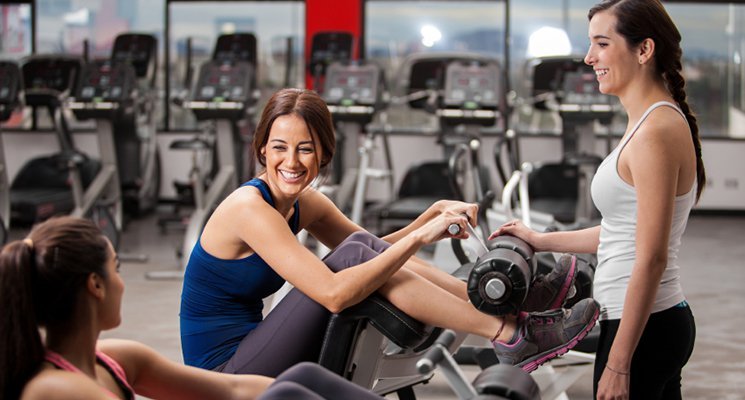
Making Your Facility Intimidation-Free
Have you ever felt close to convincing an on-the-fence prospective member to join your facility, only to have them back away in the end because they’re afraid of being intimidated? In surveys, intimidation is one of the most common reasons people give for avoiding sports and fitness facilities—and we’ve all seen the Planet Fitness “No Gymtimidation” commercials. Of course, the people perceived as intimidating in your facility might have no intention of scaring others away—in fact, they’re probably among your best customers, and you don’t want to do anything to alienate them. But there might be one or two super-serious exercisers who get a kick out of flexing their muscle, literally and figuratively, and scaring others off what they think of as their turf. What can you do to help limit intimidation in your facility?
To begin with, foster a sense of community. If your place feels like a cooperative, supportive, noncompetitive, accepting one, you’re less likely to find yourself trying to manage bullies, or even just dealing with members who perceive others as intimidating. This, in fact, is what the Planet Fitness ads are all about: They’re a way of saying, “Everyone here is in this together; everyone is welcome.” To create an environment with a similar message, try posting signs that convey your facility’s inclusiveness. Come up with your own “No Gymtimidation” slogan and plaster it around. Make sure your staff, including front desk folks, sales people, trainers, and locker room attendants, infuse the place with friendliness and respect. Tolerate expressions of judgment from no one.
Also, if you’ve got a core group of intimidators (intentional or not), try to harness their excellence for the benefit of your facility. Maybe organize a “Masters Circle,” or something similar. Personally ask your most intense, serious, and possibly bullying members to join. Give the group workouts appropriate to their level—and give them a talk, asking them to be aware of members whose skill might not match theirs. Explain how new members, whether novices or experts, are crucial to the long-term health of your facility, and ask them to be a force for good within the facility, maybe offering to help less experienced members or generally just to project friendliness. In effect, you want them to be ambassadors to your sports or fitness center.
Another approach: Rely on your trainers and instructors to keep things fair. When a class is packed and there’s an aggressive push to get to the front row, a mindful instructor can choose to spend at least part of the class at the back of the room, turning the back row into the front. That way, everyone feels like they get fair exposure to the lessons being taught. Trainers can keep a watchful eye on exercise equipment and cardio room usage, making sure no one’s hogging a particular machine or staking out personal territory. Instructors and trainers often have direct access to clients and members in a way that other staff members do not — they see them regularly and often build up a rapport with them. They can use their familiarity and rapport to make sure everyone gets a fair shot, and intimidation is not a factor.
The bottom line is that your facility should feel like a fun, relaxing place for each person who uses it. If that’s the case, then everyone wins (including you). It’s worth spending time thinking about how to create the kind of environment that welcomes everyone, and how to make it clear to prospective members that “everyone” includes them.
University of Northwestern Ohio Covers Baseball Diamond in Red Turf
While athletic facilities with outdoor fields frequently feature turf, and often turf that’s colored to display team or school spirit, it’s rare to find a baseball field with synthetic turf—especially synthetic turf that’s bright red. But the University of Northwestern Ohio, in Lima, Ohio, has become the first in the nation to sport a red baseball field. The surface will be ready for play in the 2015 fall and spring seasons.
“Turf allows us to save not only on maintenance, but travel as well,” said the university’s head coach, Kory Hartman. “It can be difficult to play games this far north in early March.” With the new synthetic field, the team should be in a better position to host early-season games.
“Baseball is a symbol in our country, and it’s easy to feel nostalgic about playing on natural grass,” said Eric Willin, COO, of EZFacility, a sports facility management software developer in Woodbury, New York, “but there are many advantages to covering a baseball field in turf, both economically and in terms of the quality of play. The University of Northwestern Ohio is going the turf route in style.”
Because of baseball’s early-start season, many teams, especially in northern parts of the United States, are forced by the weather to practice in gymnasiums and batting cages, as opposed to on an actual field. Turf allows teams to play outdoors in wet and even snowy weather; as a result, in the past few years, more and more leagues have allowed the installation of synthetic fields.
New Athletic Complex to Open In California Storage Facility
A new athletic complex is coming to Ladera Ranch, California — right next door to a massive storage facility. Michael Schwartz, owner of Smart Stop Self Storage and Strategic Storage Trust, Inc., has received municipal approval to build a $32.6 million athletic center on a plot of land adjacent to his 100,000-square-foot storage facility.
The complex will include a 56,000-square-foot gymnasium with eight basketball and volleyball courts. It will also expand Smart Stop’s operations, with 41,400 square feet of the new building dedicated to storage and 21,000 square feet set aside for Smart Shop’s office headquarters. Built-in features will include cameras on all courts, so that parents or sports scouts can log in remotely to watch games or practices. In addition, plans for the facility include the installation of rooftop solar panels and an architectural design that will stand out in the community.
Schwartz told the Orange County Register that the project fits in with the company’s vision for serving the community. “It’s not a small endeavor, but we really believe in the community,” he said. “The mixed-use financially makes sense. We can build the nicest indoor gymnasium in the U.S., and we need to expand storage space and offices for our growing operations.”
Eric Willin, COO, of EZFacility, a sports facility management software developer in Woodbury, New York, called the move an intriguing experiment. “Community-minded entrepreneurs look for ways to grow their businesses while also serving their localities. There is almost no community in the United States that would not benefit from having an easily accessible athletic center available for use. Situating such a center within an already established business stands to benefit all parties involved.”
Schwartz commented that anyone will be able to rent the athletic center, including the players and club teams of local basketball and volleyball leagues, as well as high school teams.

Planning for Emergencies
My son is eight years old, the age at which curiosity, acquired knowledge, and a total fascination with disaster scenarios come together beautifully and lead to all kinds of thought-provoking (and sometimes horrifying) what-if questions. What if the house blew up just as we were about to step inside of it? What if a tornado ripped through town unexpectedly while summer camp was in session? What if we went to watch a baseball game at Yankee Stadium and an earthquake happened in the first inning?
That last one gave me pause. What if an earthquake did happen during a baseball game? What if you run a sports facility or a recreation complex or, for that matter, a gym, health club, or fitness center and you’re faced with a major emergency? How do you prepare yourself? How do you even begin to think of something as massive, and as potentially devastating, as an earthquake?
Kevin Bryant, a senior facility manager for the Gordon Faber Recreation Complex in Hillsboro, Oregon (which boasts a 3,700-seat baseball stadium, a 7,200-seat football/soccer stadium, and six softball fields) addressed such questions in a recent article for Sports Venue Safety, a supplement to Athletic Business. Bryant has encountered a number of extraordinary situations at his facility: a drunk and belligerent spectator, drug-use by a semi-professional sports team in the locker room, lights going out during a stormy, night-time, high-school football game. None of these are on the scale of an earthquake, but they got him thinking about the importance of being ready should a major emergency occur.
In order to frame out a coherent emergency plan, including an evacuation strategy, Bryant and his team—full-time and part-time staff—engaged in a months-long effort. Starting with the simple plan they already had (and you no doubt have at least a simple one of your own), they called upon the expertise of police and fire first-responders, city staff, and school district personnel. They researched actual emergencies that had happened at other facilities, used virtual reality software, and good, old-fashioned brainstorming to imagine potential situations. At the end of the process, they produced a carefully crafted, solidly tested, emergency and evacuation plan.
Bryant offers some useful advice. The first step, he says, was getting practical training for all full-time staff so that, at the very least, everyone knows how to administer basic first-aid and everyone has some AED and CPR training. Whether you run a sports facility or a gym or health club, you’ve probably prepared key staff members for simple emergencies in similar ways. But it’s worth asking yourself whether you’ve trained enough staff and whether new employees need training. Do you have a plan for yearly refresher sessions?
After training, Bryant and his team made a list of the exact types of emergencies they might encounter at their facility and then researched preferred ways of dealing with those emergencies. They looked into bomb threats, critical operations shutdowns, fires in and outside the stadium, extreme weather situations (including, yes, earthquakes), medical emergencies, and even nuclear fallout. They outlined, among other things, what the immediate reaction to each type of emergency would be, who would be responsible for what, and how the city and first-responders would be involved. The take-away here is that different kinds of disasters require different kinds of responses. At your facility, you must have a specific plan for each kind, and all the players must be clear on their roles.
Once you’ve got your written plan, you need to start another round of training—this time stepping through the actual plan as if an emergency had occurred. Bryant’s staff went through a fire drill. On a day when there was no event, they pulled the fire-alarm, role-played responses, and then discussed how it all went. The exercise revealed the importance of communication in the midst of chaos, noise, and stress, and showed Bryant that, while a written plan is crucial, realistic training is the only way to get all players on board with how to manage an actual situation.
Another great thing about eight-year-olds is that they’re convinced they can overcome any disaster scenario they might have to face; when my son explains how he’s going to deal with the tornado-at-summer-camp, or any other similar situation, he always describes his own deeds of daring and his phenomenal, heroic triumphs. I love his confidence and optimism, but I always try to remind him that he has a good chance of succeeding as long as he has a carefully thought-through plan.
EZFacility Updates EZleagues Scheduling Wizard
Woodbury, NY (August 9, 2014) – EZFacility, an industry leader in sports management software, today announced an update to its EZLeagues Scheduling Wizard software. The update enhances and refines the Scheduling Wizard’s capabilities, making it even simpler than before to create a league or tournament schedule. The upgrade focuses on improving functionality and adding a fluid interface.
With more clear and concise content, users will find scheduling a league to be even quicker and more precise than ever before. Within the update is a brand new feature added to the Scheduling Wizard, Auto-Save. The addition of the Auto-Save feature gives EZFacility’s clients, for the first time ever, the ability to save their scheduling progress as they work, and the option to return to it at a later time.
“Our main goal has always been to create a software program that can be easily operated. This upgrade brings us one step closer to accomplishing that goal.” said Michael Vidal, Product Owner at EZFacility. “The groundwork has been laid, now we are looking to build upon it.”
EZFacility’s EZLeagues Scheduling Wizard is an ideal service for business owners who are running leagues and/or tournaments with small or large groups of people.
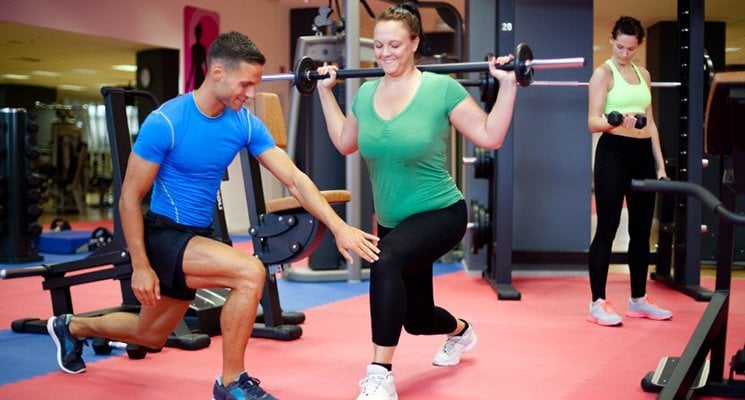
Study Links Obesity to Lack of Exercise—What It Means for Your Facility
You may have heard about a long-term Stanford University study that recently revealed interesting—and controversial—results. Obesity, the study concludes, is due primarily not to over-eating but to a decline in exercise. “Our findings do not support the popular notion that the increase of obesity in the United States can be attributed primarily to sustained increase over time in the average daily caloric intake of Americans,” said the study’s lead author, Uri Ladabaum, an associate professor of medicine at Stanford. “We found significant association between the level of leisure-time physical activity, but not daily caloric intake, and the increases in BMI and waist circumference.”
This is good news for the fitness industry for several reasons. First, amid all the clamoring voices in the media and among experts, it lends a weight of authority to the work we do. Every day, it seems, there’s a new report, or a new top-ten list, or a new “trusted opinion” about the value of exercise, the value of dieting, the value of exercising while dieting, the value of a health club membership. The Stanford study took place over a 20-year period. It rigorously examined obesity, waistline obesity, physical activity, and calorie intake among both men and women. It offers unique data: In 1994, for example, only 19.1 percent of women said they did not have any physical activity in their lifestyle; in 2010, 51.7 percent reported that they did not work out. The difference is similar for men: In 1994, only 11.4 percent of men didn’t work out; in 2010, that figure was up to 43.5 percent. During that time, body mass index increased .37 percent per year for women and .27 percent per year for men.
The upshot is this: Medical scientists who have spent two decades studying the issue have proven that people need to work out to avoid obesity. The opportunities for working out provided by gyms, health clubs, fitness venues, sports centers, and the like are unparalleled. In today’s society, with the pressures of work being what they are and the possibilities for sedentary activity being so attractive and plentiful, it is your facilities that give people a fair shot at lasting good health.
How can you use this information to your benefit? Make it known. Spread news of the study through your social media channels and through personal interaction—make sure your trainers and your sales staff know about it, and get them talking about it. Find ways to ask your members to tell their friends.
Also, create outreach programs. The study shows that the groups hit hardest by lack of exercise are African-American women and Mexican-American women. Consider creating affordable programs and make them available to these groups. Also, try to figure out the best ways to spread the news about them. People who don’t have easy access to exercise want it—and desperately need it—and they represent for you a virtually untapped source of new memberships. It’s up to you to design memberships that work for them.
But beware of one thing: The study results are, as I mentioned, controversial. Certainly eating habits in this country are problematic, especially in places known as food deserts, where nutritious choices are not always available or understood. Even in places where incomes and available options do allow for healthier eating, the prevalence of processed food, fast food, and just plain junk food often leads consumers to make poor choices. To show that you’re concerned with the total health of your members, try to make yourself a source of information about nutrition and healthy dieting. Offer programs to educate your members about healthy eating choices—and to set yourself apart from your competition. Your members are there to work out, and that’s the first step; give them the added bonus of increased chances at better eating. They’ll watch their BMIs drop quicker, and eventually you’ll watch your membership numbers grow.
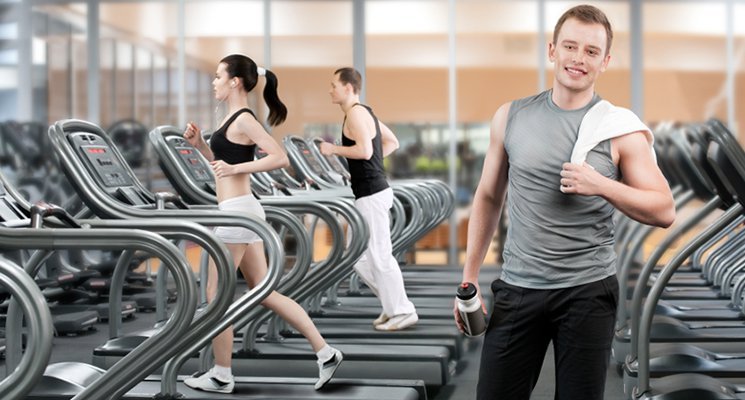
Planning for Wear and Tear
It’s a sad fact of life—any highly trafficked building, sports clubs, gyms, health clubs, and fitness centers undergo a great deal of wear and tear in a short period of time. Cracks and chips in the tiles, dings and scratches on countertop edges, tears in the mats, streaks on the floors, and marks on the finish of doors are inevitable, and they happen much sooner after construction or renovation than you would expect or like. But there are some steps you can take to prevent damage and keep your facility looking, well, maybe not brand new, but at least younger than it really is.
1) Expect and plan for deterioration. Certain features of your facility will age faster than others, like the tiles, countertop edges, mats, and other things listed above. Toilet seats, showerheads, the pads on workout benches and machines, handgrips—these and other frequently used things are items you can expect to show wear and tear. And if you can expect it, then you can make plans to guard against it. Take efforts to predict which areas will suffer the worst by identifying high-impact spaces and observing changes in those spaces over time. Note how long it takes for items to begin showing damage and document the timeframe—along with repair and replacement costs—so that down the road you’ll know when you need to take action and begin purchasing new items.
2) Design your operating and capital budget to accommodate refurbishing on a regular schedule. Your annual operating budget should include room for small improvements and repairs, and you can use your budget to step up into larger capital remodeling projects. Like dining venues that use a 7- to 10-year agenda for overhauling their spaces, fitness and sports facilities should plan for regularly scheduled updates within relatively small timeframes. They should also consider renovations that will need to occur in longer timeframes, and plans for such renovations should be updated annually. The goal is to ensure that the look and function of your spaces will still be relevant in 15 years, 20 years, and beyond.
3) One thing you probably already can’t do without (and if you are doing without it, you should stop everything and get one set up immediately) is a personal service reference guide. This is a notated list of professionals who installed elements of your facility and designed its features. The myriad small details that go into putting a space together can get lost over time, and if you begin refurbishing a space, you might find information about those details crucial to your project. You’ll need to have at your fingertips the names of the engineers, subcontractors, carpenters, and electricians whose work went into creating the original space. When little things start to go wrong—breakers begin to trip, remote controls no longer work—this reference guide will be priceless. Include everything you can think of, down to the names of the carpet and tile suppliers. You’ll be really glad you did.
4) Another key strategy is developing a vigorous cleaning routine. Imagine your mother there everyday, asking whether you’ve cleared your dishes and put your things away, and then multiply that by a thousand. In any building, and especially a high-use facility, it’s the accumulated grime and grit that can lead to premature aging. Don’t rely only on standard custodial care; in a health club or sports facility, you need specialized housekeeping of particular areas. And you need it daily. Also consider the cleaning that can be outsourced to specialists: power-washing entryways, keeping windows sparkly, scrubbing tile and grout.
If you’re still in the planning stages, waiting for your facility to be built or renovated, there are other steps you can take too: choose materials made for high-impact use, select finishes that will be easy to clean, note warranties and product limitations. The main point is this: From the very beginning, you want to imagine how your facility should look thirty years from now; then work to make sure that it looks that way. And if there’s some wear and tear that’s unavoidable, consider that a sign that your facility is well-used and well-loved, and be glad.
Major Overhaul of University of Colorado-Boulder Rec Center
A three-year plan to renovate the student recreation center at the University of Colorado-Boulder is starting to bear fruit, with a new pool now on campus and new tennis courts slated to be operational at the end of July. The pool has been a focal point of the project, as it is uniquely shaped to resemble a charging buffalo, the university’s mascot.
In April 2011, more than 70 percent of students at the university voted to increase student fees in support of a $63.5 million recreation center overhaul. In addition to the pool and tennis courts, the overhaul has resulted in a strength and conditioning space double its original size, a much larger group exercise and fitness studio, a new ice rink, a refurbishing of existing gym spaces, a new climbing gym and bouldering wall, and a renovation of locker rooms, lobbies, and meeting spaces.
“Like many other universities, the University of Colorado at Boulder has recognized the need for a top-notch exercise facility,” said Eric Willin, COO of EZFacility, a fitness center management software developer in Woodbury, New York. “Prospective students weigh exercise facilities carefully when they’re comparing universities and deciding which one to attend. If a school lacks decent space with high-quality equipment and an array of classes and other offerings, prospectives go elsewhere. Also, as demonstrated by the buffalo-shaped pool, a school’s rec center is a mark of pride — it’s a center for school spirit.”
Annie Mulvaney, assistant director of marketing and external relations for Colorado’s recreation service, told the university’s newspaper, the Boulder Daily Camera, that the recreation center received some criticism for spending extra money on an elaborately shaped pool that, being outdoors, will be open for only a short time each year. But she noted that it’s a feature students have supported heartily.
YogaWorks Acquired by Private Equity Firm
YogaWorks, a Los Angeles-based company that operates 29 studios in California and New York, was sold to the Boston-based private equity firm Great Hill Partners earlier this month.
The yoga studio’s parent firm, Highland Capital Partners, sold the company for about $45 million, according to the Wall Street Journal. In addition to studio-based classes, YogaWorks produces online courses and videos through MyYogaWorks and has an established teacher-training progam.
“The popularity of yoga is on the rise and has been for years,” says Eric Willin, COO of EZFacility, a fitness facility management software developer in Woodbury, New York. “Investing in a yoga studio is simply a good business decision, especially if the studio is an established brand with the potential to thrive in new markets.”
Great Hill Partners has more than $3 billion under management. A spokesperson for the firm told the Wall Street Journal that YogaWorks was an appealing acquisition because of its robust brand recognition. Also, Great Hill’s research reportedly has shown that yoga class attendance is increasing at a rate of more than 10 percent per year.

Getting Past the Summer Attendance Blues
This is it, folks—we’re now in the throes of what I like to call Summer Attendance Blues. Every year it’s the same story: June hits, attendance at gyms, fitness centers, and health clubs takes a dive. It stays low till the end of August. You watch in despair as a handful of only the most loyal clients straggles in for classes, while your front desk crew twiddle their thumbs and your locker rooms stay woefully empty.
Okay, maybe it’s not that bad, but some days can feel that way. What can you do?
It may be daunting to imagine cutting back on your group exercise schedule, but that could be the first step to take. On IHRSA’s blog, Anne Whiteside, program director at the Yakima Athletic Club in Yakima, Washington, says, “It’s absolutely necessary to cut back on group fitness classes during the slower months.” Frances Michaelson, Owner/Director of Muscle Up, Inc. in Quebec, Canada, agrees. “In the summer,” she says, “there’s always a drop in the numbers and it’s acceptable to reduce the number of classes.”
If you do cut back, you’ll inevitably displease some people, but both Whiteside and Michaelson say there are steps you can take to assuage them. Whiteside recommends educating members very directly about why you’re cutting back. “Inform them about industry averages for classes, and/or your own personal goals for the club’s group exercise program. Let them know what the numbers are, that that they’re falling off due to seasonal low attendance.” One possible benefit from doing so is that members may begin to pay more attention to the shrinking numbers—and they may start to encourage others to attend regularly in order to keep the classes on the schedule. Another option is to combine classes, says Michaelson. “For example, if you offer a step class and a toning class that are both popular, then why not put the two together with a circuit-style format, and call it ‘Step ‘n Tone’?”
If reducing the number of class offerings doesn’t seem like enough, or if it’s something you’re simply not willing to do, there are still other steps you can take. You could consider instituting summer hours, keeping all your offerings but compressing them into just four or five days a week. Or design an incentives program. Perhaps if members attend 35 classes between July 1st and August 31st, they receive a discount for September, or if they bring a friend to at least 10 classes during that time, their friend gets a month’s membership free. Think about what kind of program would work best for your facility, and get creative. You might also try simply getting members to pledge at the start of summer that they’ll make it to your facility a certain number of times before the summer ends. Studies show that people are more likely to stick to promises and goals if they take the trouble to state them in a formal way.
Whatever your plan, make sure you have one, even if it’s just doubling down on efforts to keep attendance high during the fall, winter, and spring. The last thing you want is that experience of sitting around watching the numbers dip, feeling powerless and waiting for the year’s sunniest season to end. And remember: Summer does end. Everyone will be back.
Weight Watchers Enters the Fitness Business
Weight Watchers International, Inc., the largest weight-management company in the world, recently combined its famous nutrition and diet programs with a remote fitness component. The company acquired Wello, an app that provides exercisers with online workouts and live classes.
“I’m impressed with Wello’s talent, their technology, and their platform to deliver personalized services,” Dan Crow, Weight Watchers chief technology officer, said in a statement. “We look forward to combining our technology and innovation capabilities to better meet the needs of today’s consumer.”
Eric Willin, COO, of EZFacility, a fitness facility management software developer, noted the growing presence of digital services in the fitness industry. “Every day, we’re seeing more and more businesses take advantage of technology to enhance exercise, increase options available to consumers, and expand their own offerings. Gyms, health clubs, and fitness centers have been at the forefront of this trend; it’s interesting to see a company like Weight Watchers taking part.”
Wello works much like the ride-sharing services that connect drivers with passengers, such as Lyft and Uber. In this case, the app makes use of browsers and webcams to connect trainers with people looking to get fit. Such digital systems offer the ability to scale quickly, providing a particular advantage to companies that use technology to provide health-management functions.
Weight Watchers is a Fortune 500 company that reported revenues of $1.72 billion for 2013.

New Health Promotion and Disease Prevention Commission Seeks Collaborators
By now, you’ve probably heard of the report recently released by the Vitality Institute, a New York-based organization made up of leaders in both the public and private sectors. Their main focus is to strengthen the evidence base of what works and what doesn’t in health promotion and disease prevention. The report, Investing in Prevention: A National Imperative, offers recommendations on these topics. A particular recommendation that has people talking is one that some may find controversial: Companies should report their employee health metrics just as they report their financial earnings.
Eighty percent of non-communicable diseases could be prevented, the report states. Preventing these diseases by 2023 could save the United States between $217 billion and $303 billion per year—about five percent to seven percent of annual healthcare spending. How do you prevent the diseases? By collecting data on individuals’ health profiles, identifying who might be at risk, and presumably then encouraging healthy habits.
Any time an individual’s private data is collected, it’s controversial. But the report seems to argue that health-related data isn’t merely private—the information that it contains could reveal ways to help strengthen society at some of its most fundamental levels. “The consequences of non-communicable diseases have short- and long-term effects by forcing individuals to exit the workforce prematurely due to their own poor health, or to care for ill relatives,” the report states. “Lower productivity and higher absenteeism, combined with soaring costs of treatment, impede innovation and crowd out productive investment in education and research and development.” In light of that, the Vitality Institute argues, it’s imperative that we know the state of health of America’s employees.
Why should you care about all this? The commission that put together the Vitality Institute’s report represents high-powered public- and private-sector organizations, such as Microsoft Corp., IBM, AARP, Humana, Johns Hopkins University, Qualcomm, and the Robert Wood Johnson Foundation. These organizations have promised to carry out four initiatives meant to revolutionize the prevention of diseases and the promotion of health in the United States. To launch these initiatives, the commission is seeking collaborators — and what businesses are better positioned to collaborate than gyms, health clubs, fitness centers, and sports centers, which already work toward disease prevention and health promotion? Now is the time to get involved.
In addition to building a Corporate Health Leaders Program comprising evidence-based workplace health promotion training courses for small, medium, and large employers, the commission also plans to “convene a workshop on ethical, legal, and social issues with respect to the use of data collected by personal prevention technologies.” Another initiative aims to strengthen leadership and advocacy through networks. All in all, these are sweeping ideas that could have a huge impact on the future of fitness in this country. That’s where you come in. And here’s an interesting idea for you: What if your company were one of the first to voluntarily begin reporting employees’ health metrics? You’d sure get noticed.
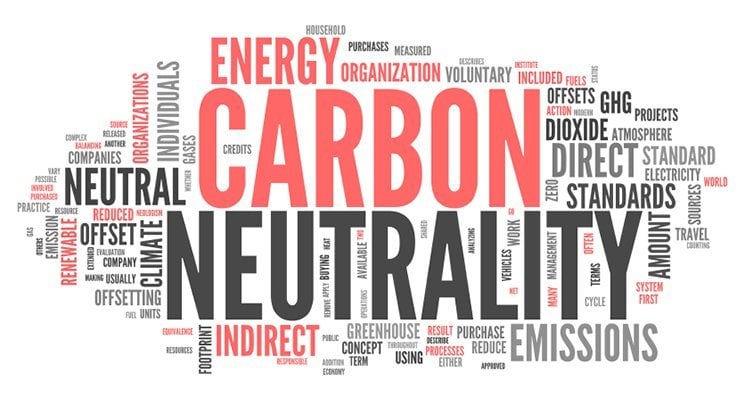
You'll be Green with Savings & Sustainability
Ah, summer. I love winter’s snow, I’m a sucker for the gardens of spring, and fall contains what will always be my favorite holiday (Halloween, of course), but for me summer is hands-down the best season of all. I love the salad-eating, outdoor-exercising, blazing hot energy of it all—the swimming, the relaxation, the air-conditioning.
I know that last item is problematic, and it’s part of a much larger issue. Air-conditioning creates a huge carbon footprint, and if employed without regard to sustainability and energy conservation, it can contribute devastatingly to environmental destruction. However, from a fitness or sports facility perspective, it’s indispensable. Yet, it’s not just summertime air-conditioning that creates challenges. Lighting, energy consumption, heating, material waste—all of these issues affect how you run your facility year-round, how much money you save or spend, and your impact on the environment.
One way to tackle all of these issues at once is to push your facility to achieve LEED certification. Being LEED—or Leadership in Energy and Environmental Design—certified means meeting certain standards in energy savings, water efficiency, indoor environmental quality, and CO2 emissions reduction. The cost of designing and constructing a building that meets such standards is high, as is the cost of improving existing buildings. Maintaining LEED-certified facilities also carries costs. But in the end, the savings associated with LEED-certification, financial and otherwise, make it more than worthwhile. So how do you go about achieving it?
First, adopt a “going green” mindset. Demonstrate your facility’s commitment to creating an environmentally sound space by getting all employees on-board with the notion. It’s crucial that your management team understands the specific goals and considers LEED-related issues in all decision-making processes; if you have a stated company mission and can make LEED-compliance part of it, all the better. Equally important is that your sales team recognizes the power of LEED as a lever for selling your brand. Potential members and customers will appreciate the knowledge that joining your club or attending your practice facility or venue helps minimize environmental impact, and in a competitive market, such a factor can be a crucial selling-point.
Next, to cover the considerable costs of building a new LEED building or bringing an existing one up to speed, consider gaining sponsorship or embarking on a partnership. Local waste companies looking to promote their recycling programs, cleaning companies that market green products, municipal agencies launching new fitness agendas, and businesses with specific, health-related objectives—these are just a few categories from which to seek out sponsors or partners. To find one that’s right for you, you’ll need to do some research, identify the needs and wants of potential partners, and design proposals that meet those needs and wants. Any proposal you come up with should detail how the image, mission, values, and/or green initiatives of the sponsor or partner align with those of your organization and highlight the value of the alignment.
Finally, think both big and small. Reconfiguring your facility to meet LEED standards is thinking big, and it’s a crucial step that involves a good deal of research, commitment, and investment. You also want to make simple changes that might be tiny in and of themselves, yet, add up to a big change, contributing to an environmentally sound approach to running your facility. Install recycling containers next to trash cans. Replace old drinking fountains with newer ones that allow for bottle refills. Consider ways you might be able to buy locally, stocking your juice bar with fruit from nearby farms and getting supplies from companies in your city or neighborhood. Offer discounts at your café for customers who bring their own drinking containers. Tie messages about personal health into ones about the health of the planet. Every little effort makes a difference, and will help make your facility a leader—year-round—in the sustainability movement.
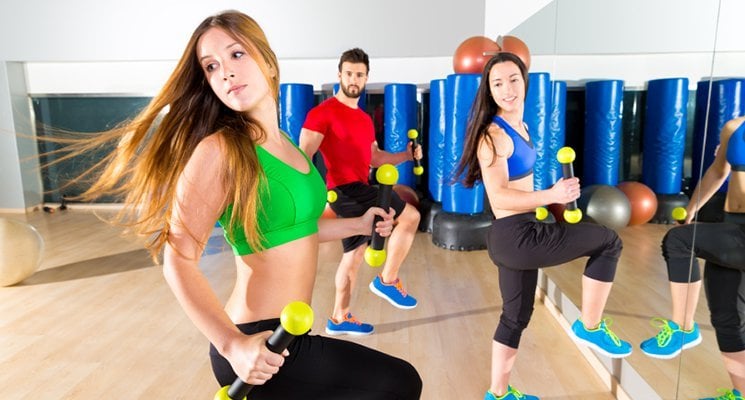
Improve Your Community, Gain New Members
Earlier this month, the American College of Sports Medicine released its annual American Fitness Index, ranking the fittest cities in America (congrats to the top three: Washington, D.C.; Minneapolis, MN; and Portland, OR). Boston, a city that prides itself on spiritedness and strength, celebrated to find itself in the top ten. Pulling in at number nine, Boston got points for its high number of farmers’ markets per capita, its high percentage of people using public transportation, biking or walking to work, and its high number of playgrounds per capita. Yet one of the areas in which the city ranked lowest was in access to exercise.
That’s about to change. In May, the Executive Director of Boston’s Public Health Commission, Barbara Ferrer, announced the Boston Parks Summer Fitness Series, a three-month program offering free exercise classes in 18 parks throughout the city. Classes will include, among others, salsa dancing, yoga, tai chi, Zumba, and Zumba Gold.
When a community becomes more aware of healthy living and the role of exercise in improving health and making a brighter future, everyone benefits—including gyms, health clubs, fitness centers, and the like. It’s almost like free advertising for the services you sell. After three months of regularly using a similar service, some people are bound to come seeking your services when the program ends. I guarantee that some facilities in and around Boston will be signing up new members come the end of August.
Chances are, your city is offering something similar. Free, municipally-run, summer exercise programs have become something of a trend in the past five years or so. That trend will only continue to grow. But why wait for your city to do the work? Why compete with your city? Why not become an entity helping your community to get fitter—while introducing the community to the benefits and wonders of your particular facility? You don’t want the summer to end and new exercise enthusiasts going to the gym down the road. You want them coming to yours. Offering a free summer program yourself is a good way to get them to do so.
Of course, as with anything, you have to weigh the benefits with the costs. Still, even a limited program—say, one free yoga class or one free Zumba class per week throughout the summer—will bring new potential members into your club. Once they’re in there, they’ll see what else you have to offer. You’ll be helping the community get fitter, and they’ll be walking out the door with memberships. It’s a win-win opportunity. And who knows, maybe next year, your own city will end up in the American Fitness Index top ten.
Ohio Hospital in Deal to Take Over Fitness Center
In a move toward expanding its services, Pomerene Hospital in Millersburg, Ohio, is finalizing a deal to take over a local fitness center. The deal, still in the works, will give the hospital management over Kinetics Fitness for Life, which offers exercise equipment, studio classes, cardio programs, and wellness sessions to nearly 500 members.
According to the newspaper The Daily Record, Pomerene’s chief financial officer, Jason Justus, said during a recent hospital board meeting that managing and running the fitness center would allow the hospital to align its services with reform in the health industry, emphasizing wellness and preventative care. “With the recent passing of the ACA [Affordable Care Act] health reform, one of the changes has been extending care beyond the actual four walls of the hospital,” Justus said. “That’s the natural evolution in wellness, and this step will help us model that change.”
Eric Willin, COO of EZFacility, a fitness center management software developer in Woodbury, New York, said the move promised to be advantageous for all parties involved. “We have seen more and more gyms, health clubs, fitness centers, and sports facilities partnering with other kinds of institutions and businesses to deliver wellness to communities. Pomerene Hospital’s decision to manage Kinetics Fitness for Life could help bring prevention to the forefront of people’s attention, and it will be exciting to see how this partnership develops.”
The owner of Kinetics, Staush Cass, reportedly approached the hospital, saying he was seeking a community collaborator. Cass said in a statement issued by the hospital that he believes the transition will benefit the center’s current members as well as the wider community. As the agreement is still under negotiation, no decisions have yet been made regarding the details of running Kinetics, according to a the statement.

Updated Subgroup Inheritance, Trainer Performance Report, E-mail Procedures and more!
Our Development Team is constantly working to improve your user experience with EZFacility. Between major updates, we release small, but important, Features and Fixes that address issues and add useful new options/tools to better help you manage your business with EZFacility.
In life, as well as in business, change can be a trying, yet necessary evil; but it doesn’t have to be. With that in mind, EZFacility’s development team has released updates to better manage the process of change. These updates include changes to the way subgroups inherit edits made to revenue categories, as well as updates to the Trainer Performance Report and E-mail Campaign settings.
Subgroups Will Now Inherit the Parent Group Revenue Category When Edited
Our latest release includes safe guards to manage and edit groups, subgroups and their revenue categories to ensure revenue reports remain accurate. When editing the revenue category of a group you will now be prompted with the option to automatically update a group’s subgroups with the change. Please note: To have access to this feature, Subgroups Inherit Revenue Category from Parent Group, must be selected in the Online Registrations section of the Administration page.
Opt-Out Link Can No Longer be Removed from an Email Campaign
In an effort to further comply with federal and anti-SPAM regulations, we have removed the ability to send an Email Campaign without an unsubscribe link. This will provide all email recipients the ability to opt out of any further communications from your facility.
Improvements to the Trainer Performance Report
The Trainer Performance Report has been reconfigured to include the ability to sort not only by date, but by Reservation Type as well. With both sort options available, you now have the added benefit of a new ‘Package Type’ column that will display the package being used by the client to book into that particular session.
New Jersey Offers Giant Tax Credit to 76ers to Build Practice Space in Camden
The State of New Jersey has awarded the Philadelphia 76ers $82 million in tax credits over 10 years to build a practice facility in Camden, New Jersey. The deal has been called one of the most generous in state history.
In a dollar-for-dollar exchange, the Sixers are allowed to recoup their costs, up to $82 million, for construction of a cutting-edge facility that will serve as team headquarters. Slated to occupy 120,000 square feet on Camden’s waterfront, the facility will provide practice space and equipment to the Sixers, and will include two basketball courts, a fitness training and rehabilitation space, player and coaching staff locker rooms, an audio-video review room, broadcast media facilities, a player lounge, support facilities, and office space. Eventually athletic camps for children and other, similar programming may be offered.
“The scope of this project bodes well for both parties,” said Eric Willin, COO of EZFacility, a sports facility management software developer in Woodbury, New York. “The team will benefit from having a state-of-the-art space in which to train and develop as athletes. And Camden will benefit from an influx of new jobs and the presence of a facility that will draw attention and business to a depressed area.”
Officials estimate that the new facility will create 250 new jobs and hope it lures additional developers to the area. A tax revenue-strapped city, Camden could net $76.6 million over 35 years, the state predicts. According to the terms of the deal, made possible by the Economic Opportunity Act of 2013, the Sixers can use or sell the tax credits from the state as long as they employ 250 people in Camden and stay in the city for 15 years.
Naysayers have questioned how much the facility’s construction will benefit residents and whether a state struggling with budget problems should be offering large-scale tax credits that, in effect, give money away. But supporters are adamant about the facility’s potential to improve the Camden area. “It’s a catalyst for change,” said Camden’s mayor, Dana L. Redd. “I am elated for my city.”

Your Sports Facility Needs LED Lighting Right Now
You run an ice rink, a stadium, or some other kind of sports arena, and you’re still using metal halide light fixtures? You have no idea what you have been missing.
Athletic Business, a print and online resource for thousands of sports industry professionals, recently ran an impressive story about the War Memorial Arena, a rink in Syracuse, New York. It is the home of the American Hockey League’s Syracuse Crunch. In 2012, the arena switched its metal halide light fixtures, which had been in place since the facility’s inception in 1951, for LED lights specifically designed for sports applications. The effects were immediate and astounding. First of all, the amount of light hitting the ice during games improved from an average of 105 foot-candles to 217 foot-candles. Simply put, spectators could see the game better. What’s more, the new LED lights have many more functions than the old lights: They can be programmed for effects during pregame introductions. The goalie can be isolated in light. Lights can be made to zoom around the facility. And, just for fun, the lights can turn the ice the exact same shade of blue as the team’s jerseys. As Howard Dolgon, Syracuse Crunch owner told Athletic Business, “The lights give us the ability to do things we couldn’t do before. They’ve become a promotional tool for us.”
But get ready for the best part: The lights save a ton of energy and money. The old metal halide fixtures consumed 263,000 kilowatts of power annually. The new LED ones? During the 2012-2013 season, the power draw was reduced by 87 percent to 32,000 kilowatts. The savings is huge.
Sure, you’ll put a decent-sized capital investment down in order to get an LED lighting system in place, but the savings you’ll reap makes such an investment well worth it. At Weber State University’s Dee Events Center basketball arena in Ogden, Utah, the conversion of metal halide lighting to LED lighting cost about $200,000 (minus $156,000 thanks to utility company incentives). But the arena’s energy consumption has been cut by 70 percent, saving the university $25,000 a year. In addition, because each LED light’s estimated lifespan is 150,000 to 160,000 hours, annual lamp replacement has been eliminated—for the Dee Events Center, that means a good 30 years of usage for each bulb. Jake Cain, the energy and sustainability manager at the university explained it this way to Athletic Business: “I did some different analyses on how this project panned out. If I did purely just the energy savings, it was about an eight-year ROI. If I threw in energy and maintenance, it was like five. If I threw in the utility incentive, now I’m down to about a one- to two-year range for it to pay for itself.”
Within the American Hockey League, LED lighting is gradually becoming the standards. Teams in several cities in addition to Syracuse have made the switch. The same thing is happening at arenas designed for other types of sports as well. There are just so many benefits accruing from LED lighting, that everyone is eager to get in on the great investment. If you haven’t started investigating options for your sports facility, now is the time to begin. Light up your business in a whole new way.

Bringing Sales to the Next Level
I have a friend who works in the sales department of an education publishing company. Recently, she won an award for having the highest monthly sales for six months running. She and her three colleagues all went through the same training, but she consistently outsells them by significant amounts (and she didn’t even have sales experience when she was hired). She told me that one of her colleagues asked her, “What is it about you? How do you do it?” My friend says she has no idea, but I do: It’s just who she is. She’s friendly to everyone and always upbeat. She really listens to people. She’s a great problem-solver. She never says no to anything. (Yes, I realize how lucky I am to have her as a friend.)
Wouldn’t it be great if she were working for your facility? Chances are, you already have some high-quality salespeople on staff. But how can you help them be even better? How can you take your sales staff from good to great?
1) Start with professional training for your sales leaders. This might seem like a no-brainer, but if you’re hiring experienced people and you’re confident about their ability to cinch a sale, the need for training could be overlooked. In fact, there’s a reason teachers, doctors, lawyers, and others have to fulfill a certain number of professional development hours each year. We all get rusty; especially in sales, when someone is making the same pitch over and over again, it’s easy to lose some of the vitality and charisma — that stuff my friend has—that is crucial to a successful transaction. Plus, the better trained your leaders are, the better trained your whole sales team will be: Solid skills and best practices trickle down. Ideally, you want to let your sales leaders choose their own training programs, ones that suit their personalities and styles.
2) Look for passion and interpersonal skills more than sales experience. Experience comes with time, but passion about fitness? An ease with people, a willingness to see each individual as unique and to truly listen to them, and the finesse required to help customers get their needs met? Those things are hard to fake.
3) If your sales numbers aren’t high enough and training isn’t producing the results you desire, you might have to ask yourself difficult questions. Do you have the right people on staff? Might you have to let a weaker employee go, or find a position that better suits his or her strengths? Do what you can to help naturally good salespeople get better, but know when it’s time to shake up the team.
4) Finally, focus on relationship-building. You want to think about this on a couple levels. First, what is your relationship to your sales team, both the leaders and the people who work under them? Do you have a personal connection to them? Do they know what your goals are and why those goals are important to you? Do they trust you? Second, what is your sales team’s relationship to prospects? Do they make an effort to connect personally? Do they listen to their needs and do whatever they can to fulfill them?
Keep in mind one more thing: Your facility and your staff are going to reflect you. As a manager or owner, you set the tone. If you (like my friend) are open and upbeat yourself, if you really listen to your employees and you tackle problems in creative ways, you’re likely to find that your sales staff (and, for that matter, other employees) do too.
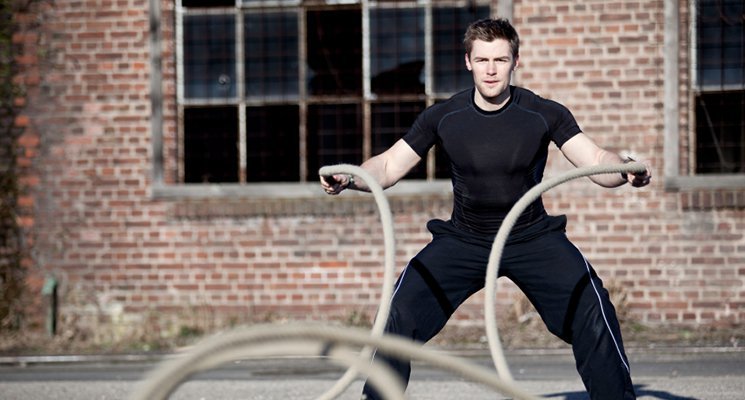
Where Fitness and League Sports Meet
There’s a new professional sports league in town. For this league becoming fit isn’t just the preparation for the game—it is the game. The National Pro Fitness League (NPFL) is a new organization that pits co-ed teams of athletes against each other in a range of functional fitness events. Headquartered in Santa Cruz, California, the NPFL has franchises in San Francisco, Los Angeles, Phoenix, Miami, Washington, D.C., Boston, New York, and Philadelphia. Its season will kick off at the end of August and last for six weeks, with the franchises competing in a total of 12 matches and a culminating championship match taking place in early October.
Wow. This is exciting news for fitness facilities and sports facilities alike. What a great development to get behind and support. Even if your facility doesn’t focus on functional fitness or offer related classes, the creation of the NPFL can be a boon to you. Since it will bring both fitness and league sports events to the forefront of the nation’s attention— at least for a little while (especially because, as NPFL Director of Team Development Cassie Haynes pointed out in a recent article, this league, unlike the NFL, MLB, and other older leagues, can be built around technology. The opportunity for fan engagement will be huge).
How can you benefit from the upcoming NPFL events? First, let your members know about them—chances are, they haven’t yet heard about the NPFL. Be the first to fill them in. Get enthusiastic about the league and convey your enthusiasm with posters, announcements, and by having your trainers talk it up. If there are competitors from your region, build up a show of support for them; make the events a bonding experience and a way to motivate your facility’s patrons in their own fitness and league practice sessions.
If you have the space and technology, you might consider setting up a few in-facility viewing events for members (and potential members!). Chances are, you’ve been looking for ways to build community anyway—and if you’re not, you should be! This is another excellent way to do so.
One great thing about the league is that it has the potentially to appeal to a wide variety of audience. It’s co-ed, so both men and women can get behind it. And it’s not filled with just hot young things; for each match, at least two competitors (one male, one female) from each team must be a “Master Athlete”—meaning age 40 or older. What other sport can boast of such inclusion? In spreading the word about the league—in your facility or on social media—you’ll want to stress this aspect of it. There’s something here for everyone.
Finally, can you think of any tie-in events you can stage at your own facility? If you have the capacity for functional fitness training, maybe you can plan for training activities that match a particular competition occurring on a certain day. Or after an event is over, you may have a trainer analyze an athlete’s performance together with clients, and help incorporate lessons to be learned into clients’ own practices. As always, the benefits you reap from such an exciting development (the creation of the NPFL) are up to you: You’re limited only by your imagination. It’s worth spending the time thinking about where you can go with this.